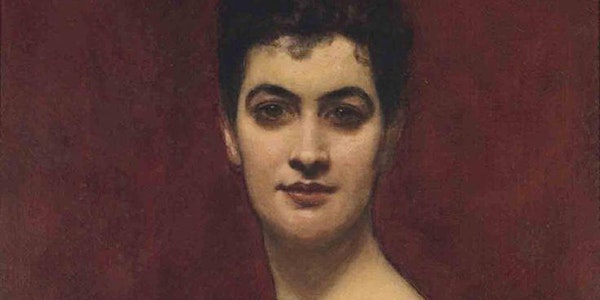
At Home with c19th Dress and Textiles Reframed - 28 April 2024 -3.00pm BST
19th Century Dress and Textiles Reframed 'At Home' - short talks celebrating the joy of research!
Date and time
Location
About this event
You are invited to join us ‘At Home’ for the April 2024 event of the 19th Century Dress and Textiles Reframed network. Short talks will share a bit of 'research joy', and help build our research community.
Please join us with some of your own tea/coffee/cake - whether you spike these with brandy or gin is up to you! Talks will be no more than 10 minutes, and will be interspersed by time for questions and chat.
Linda McShannock- "A Living for the Earnest, A Fortune for the Capable: Dressmaking in Minneapolis, 1880-1920"
Women had narrowly defined roles in the 19th century with few employment options. Custom dressmaking was one occupation that provided acceptable employment for immigrant women, young farm girls, married women or widows. These businesses, staffed primarily by women, provided creative work and opportunities for advancement. Their clients secured their social status through their fashionable garments. By the early 20th century, the production of fashionable ready-made clothing reduced the number of clients, cutting into the dressmaker's business. Increased opportunities for working women reduced the available workforce and dressmaking as an industry declined. The work of twenty-five dressmakers survives in the Minnesota Historical Society's collection and represents the more prominent dressmakers in Minnesota between 1880-1920. These garments provide the evidence we need to follow the thread between the clients who purchased and wore the dresses, the dressmakers who ran the businesses and the seamstresses whose skilled work sewed the seams and embellishments.
Linda McShannock retired as curator of the Minnesota Historical Society’s textile collections. She holds a BS in Fashion Merchandising from the University of Minnesota, and an MA in Textile History, Quilt Studies, from the University of Nebraska-Lincoln. Her research has focused on women’s traditional textile roles including employment as needleworkers, dressmakers, milliners and tailors. She is a seamstress with a life-long interest in the fiber arts. She has been President and Board member of Textile Center, a member of several local textile guilds, the Costume Society of America and the American Quilt Study Group.
Cecilia Soares - "A transatlantic wardrobe: an analysis of the Belle Époque sartorial goods from the Ivy House Museum, in Vassouras, Brazil (1870-1910)"
The Ivy House Museum, in Vassouras, Brazil, is a house-museum and the former home of the Teixeira Leites, a wealthy family of four - father, mother and two daughters – who lived there between the 1830s and the 1870s. Its archives contain 44 sartorial items, mostly from the Belle Époque, which reflect the global upbringing of the two daughters – Francisca and Eufrásia. The latter, especially, thrived as a financial investor in Paris between the 1870s and the 1920s. Seen among the 44 pieces available are walking, riding, and party dresses, sleeping gowns, umbrellas, fans, hats, and shoes. Fifteen of the pieces of clothing carry formal brand tags and can be attributed to some of the biggest fashion names of the time – including Felix Breveté, Rouff, Mourin & Blossier, and Charles Worth. There are also six pairs of shoes from different stores, including at least one from the Parisian boutique Hellstern and one from a bootmaker in Rio de Janeiro. This sartorial sample is not only a very rich example of a fine lady’s wardrobe during the Belle Époque but is also a source of mystery. Most items belong to the 1870s-1880s – a period during which the sisters were still young but did not live in Brazil anymore. Why, and how, did these items survive until today? What kind of consumption habits can we infer from these samples, which are no second best when compared to other wealthy families and even nobility? This presentation uses the sartorial goods as a starting point to (re)build the family’s global connections and the sisters’ perspectives as liberal women from their time.
Cecilia Soares is a Swiss-born Brazilian independent writer and researcher with a background in Sociology. She’s interested in dress history, and her first book, Barões de Tamancos, discusses shoes as a vector for the adoption of modern values (freedom, individuality, civil rights, etc) during the 19 th century. Today, her main interest is to explore different examples of this dress history approach, including an in-depth analysis of bootmakers and their stores. She also studies the life and achievements of Belle Époque businessman Eufrásia Teixeira Leite. Cecília currently lives in Rio de Janeiro, Brazil.
Alden O'Brien - Sewn in America: Making—Meaning—Memory
The DAR Museum’s current exhibition Sewn in America: Making—Meaning—Memory looks in part at women (and men) who sewed professionally. This short talk will discuss the objects with implicit and explicit connections to sewing professions in the exhibition, along with garments and objects related to the evolution from custom-made to home-made and ready-to-wear garments such as patterns, a sewing machine, and drafting systems. Diaries, account books, sewing manuals, and fashion magazines will also be discussed in terms of how they helped put these pieces in context and enhance the label and catalog copy.
Alden O’Brien holds a BA in Art History from Barnard College, Columbia University and a Master’s in Museum Studies: Costume and Textiles from FIT. She has been curator of costume and toys at the DAR Museum since 1990, of the quilt collection since 2003, and of needlework since 2017. She has curated over a dozen exhibitions on clothing, childhood and toys, and quilts; Sewn In America is the first to combine all the DAR’s textile collections in a comprehensive look at the role of sewing in women’s lives.
Image:
Portrait of Eufrásia Teixeira Leite. Oil on canvas by Carolus Duran, 1887, 85.5 x 63.3 cm. Museu Casa da Hera, inventory number T066.